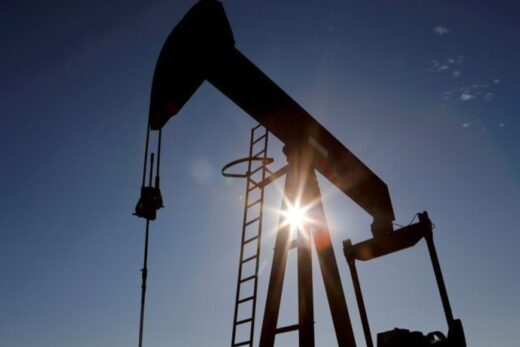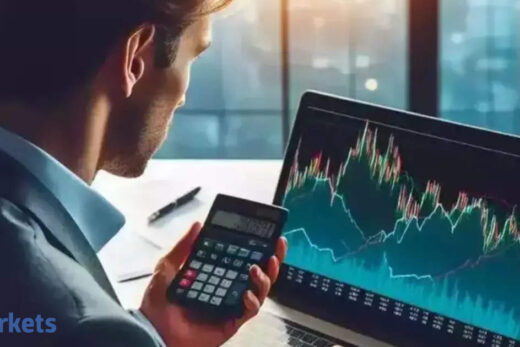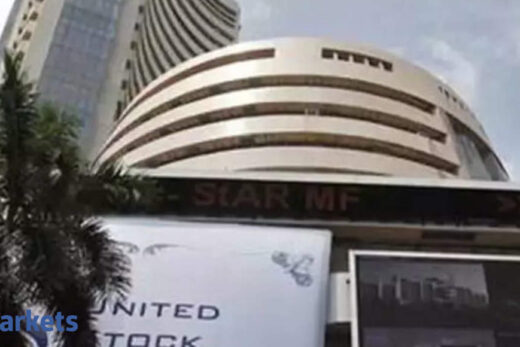If I look at the year on year comparison and the realisations, it seems the purple patch for the steel sector continues?
Yes, we are in a good place as far as industry is concerned from a demand perspective with multiple governments across the world focussing on infrastructure including our own. Also, costs are on the higher side, given the input cost at record levels. Plus. China despite a bit of a slowdown is not exporting much and cutting production month on month. So overall the sector is in a good place.
We have seen a lot of volatility in iron ore prices. So what happens to the steel prices given that the raw material prices are fluctuating so wildly?
There is volatility in steel prices. If we look at the steel prices in the last three to four months in Southeast Asia, hot rolled coil prices fluctuated between $850 and $950. It went up and down twice. It seems there is volatility because of raw material prices but even today, the raw material prices are at a high level so coking coal prices for Indian importers are in the $380 to $400 range and for China it is in the $550 to $600 range. When one buys coal at that price, it is very difficult to sell steel at much cheaper prices than is available today. That is the big change.
Secondly, iron ore prices have dropped but seems to have stabilised around $100; and third point is that because China is cutting steel production every month, it is not going to be exporting a lot of steel. That gives a lot more stability to global trade and steel and hence steel prices have stayed at a higher level than we have seen in the last 10 years.
Can I say that while volatility will continue after the last one year’s price appreciation, in terms of a directional trend, steel prices are headed higher?
What we have guided for this quarter is for instance, in India prices will be about Rs 2,500 higher than last year and in Europe. it will be about 25 to 30-35 pounds per tonne higher. Also we have long-term contracts both in India and in Europe with segments like the auto industry, where prices are being renegotiated. As auto industry demand picks up, it helps us in the mix. So for multiple reasons, we expect realisations to be trending up for this quarter as well.
Finally good news coming from Europe in a sense has been the swing factor. From brokerage reports, our understanding of your number is that the normalisation of demand has helped the European business?
In Q1, everyone was disappointed because in Europe, Tata Steel Europe has a larger proportion of long-term contracts and we are a very strong player in both the auto and packaging industry. As a consequence, we were not able to see the benefits of rapidly increasing prices in Q1, but as the contracts got renegotiated as we started getting better prices from the stock market, we could see the improvement. So European EBITDA has doubled in Q2 compared to Q1 and is expected to stay strong for the rest of the year.
But for the quarter gone by, would you say the domestic demand was not satisfactory?
You mean domestic demand in India?
Domestic demand in India — Tata Steel India business.
Yes. Normally the July-September quarter is the weakest quarter for demand in any year because in the monsoon time, construction activity slows down and construction accounts for 60% of the steel consumption in the country. This part for us was no different but typically it is a strong quarter for the auto industry because you are preparing for the festival season. This time, it was not a great quarter for the auto industry because of the semi-conductor crisis for the passenger cars and commercial vehicles were slow to pick up. But in the last few weeks, we are seeing that the commercial vehicles business is picking up and that is good for steel because the steel intensity in commercial vehicles is much higher than in passenger vehicles. Overall we are expecting the next two quarters to be better from a demand perspective in India. Otherwise Q2 demand in India shrunk by about 2.5% compared to Q1.
Do you think whatever you have lost in Q1 would be more than made up in next two quarters?
In terms of volume, to a large extent we will make up. We will still be a little bit short because of Q1 but overall, Q3 volumes in India will be flat compared to Q2. In Europe, we will be better than Q2 and in fact Europe Q2 volumes are expected to be closer to the Q1 volumes. Overall for the year, we had given a guidance of much higher volumes than last year. It will be in the 1.5 to 2 million tonnes range.
The India standalone business now also includes the BSL business. So what happens to the India business post the BSL merger?
Post BSL merger, the Meramandali site which is the Angul site of
becomes like another site for us just like Jamshedpur and Kalinganagar. We have a third site and so it becomes an integrated part of the Tata Steel ecosystem which is good in one way because we have just had some amendments in the MMDR Act which means you pay a higher royalty even if it is a wholly owned subsidiary. This way, when you merge it, then it is part of our existing enterprise. In some sense, we will avoid leakage and it also drives greater efficiency from multiple points of view because there are many synergies that we have already driven as different legal entities. There are many efficiencies that we can drive as one enterprise. This was part of the plan. It took us a bit longer than we thought because we had to go through the approval process at the NCLT level.
“We believe we will be able to retire this debt as well as spend Rs 10,000 to 12,000 crore a year on capex and that is what we have guided.”
Your cash flow generation is still strong and your debt reduction is an ongoing process. But looking at your optimism on the steel cycle and your operating leverage benefits, are you looking at retiring debt at a significantly faster pace than what you had earlier indicated?r
When we started off three-four years back, we said a minimum of a billion dollars a year. Obviously we are doing much better than that. We did much better than that last year and we will do much better than this. We have already done almost $2 billion in the first six months. So we are going quite strong on that. The guidance we are giving is that our net debt to EBITDA will be less than one by the end of the year. We were at four or five levels a few years back. At less than one, we are extremely comfortable.
Is it a good idea to reduce debt that much because the interest rate environment globally is low. Tata Steel can raise money globally. What stops you from not reducing the debt and start putting that money back in capex?
We believe we will be able to retire this debt as well as spend Rs 10,000 to 12,000 crore a year on capex and that is what we have guided. We will be very prudent about our capex. We will continue to support growth. We will continue to grow in India. We are adding another 5 million tonnes in the next couple of years with the Kalinganagar expansion and we have the opportunity to take the India volumes to 35 to 40 million tonnes in the next 10 years.
All that can happen through organic growth. We have that possibility and if we have the net debt to EBITDA at less than one, we will have the headroom for anything else that we want to do. But we are conscious about spending our capital wisely. We will certainly protect our market share and grow aggressively in India. We will be very prudent about how we spend money outside India and we want our businesses outside particularly the European business to be able to stand on its own which we are on track for.
How should one read into this whole emphasis which Tata Steel has on ESG. ESG has become the new normal for all manufacturing companies but it also will come at a cost which means in the short term, less capacities will get created and will lead to more inflation. It will also lead to more uptick. Where do you think the balancing will happen?
You have raised a very valid point because obviously there is a hesitation about investing in assets which are not seen as green, which could lead to a demand-supply gap in some areas if we do not manage the transition well. The way we look at it is an approach for Europe which is driven by what is happening in Europe. Europe is ahead of everyone else in the world in terms of setting goals and creating policies to support those goals. In Europe, there is a transition plan which is being developed for our UK and Netherlands business in consultation with the government.
Primarily this transition cost has to be supported by the government and has also to be supported by the customers who should then pay more for green steel. In the European context, the support is there. In India, with the net zero goals and the 2030 goals that have been announced, we are looking at the policy roadmap and how it will evolve because again this transition will cost money and the policy roadmap has to support that so that we are not unfairly treated in this transition.
In India, we have already announced aggressive goals. We have said that our carbon footprint will be less than two. We are already the benchmark in India as far as the carbon footprint for steel industry through the blast furnace route is concerned. We will bring it to less than two tonnes per tonne of steel by 2025 and less than 1.8 tonnes per tonne of steel by 2030. Those are quite aggressive goals and much below where we are today at around 2.3. We have set the short-term goals aggressively and we will pursue that. It is very important and as a responsible corporate we want to be a role model in this.
But in the short term, because of limited capacity addition, price inflation is going higher. Whether it is for steel or coke or iron ore, ultimately everybody wants to be conscious and this consciousness is coming at a cost which is leading to disruption. As a result, inflation and price hikes have kicked in. Where do you think the balancing will happen?
That is primarily the point which is being made even by the Government of India when it says that the developed world which historically had a much bigger carbon footprint should fund the transition for the developing world. In some sense, the commitment made at Paris was that at least $100 billion a year will be made available to the developing world to help this transition to mitigate some of these costs. Maybe richer countries can afford to bear some of these costs, but in developing countries where a large number of people are still just about getting electricity, one cannot suddenly keep increasing the energy prices because of this. We need to find a way out. So that is why the transition needs to be managed very well. It is not a simple transition and governments have to work closely with industry to make sure that it is not passed on to the common man.
ET Now: The Tata Steel management has indicated that Asian steel prices will remain range bound, Indian prices will rise and European steel prices will remain resilient. Can Europe be the swing factor which we have been waiting for? What does the word resilient in Europe mean for you?
TV Narendran: There are two, three things in Europe. Over the next few months , the auto industry in Europe will pick up. They have been struggling because of semiconductor issues which is good for us because a lot of our steel goes to the auto industry. The second important development for Europe is the sorting out of section 232 issues with the US, which means steel can flow from Europe to the US in a manner that it used to flow a few years back. Even from a Tata Steel point of view, we used to sell about a million tons of steel from Europe into the US, which has come down about 50% in the last couple of years.
The US is a good market. We have good customers there, good equity there and so we look forward to that. It will give a better balance for the European business as the US opens up as a market and the auto industry comes back. The resilience comes from the positives that we see. Even this year, the steel consumption in Europe will be 14-15% higher than the previous year and will go back to pre pandemic levels very quickly.
Can a combination of Indian demand coming back along with US infrastructure spend, make up for the drop in Chinese demand?
Absolutely. Even the World Steel Association forecast is that steel consumption will grow at about 4.5% and this is assuming there is no growth in consumption in China. The 4.5% is coming from the rest of the world, which is probably the first time in more than a decade. Going forward, this will be the story because China is going to cut consumption and production and China has already peaked from a percentage of world steel production and consumption.
Its highest was about 58%, it is expected to drop down to maybe 52-53%. So countries like India, Southeast Asia are going to be three billion more in the next few decades. By the end of the century, we will have four billion people in Africa. There are multiple parts of the world which are going to require a lot of infrastructure. There will be a lot of developmental expenses and on top of that, the developed world like the US is announcing infrastructure spend like never before. So, there is going to be a structural shift as well in demand and China will no longer be the big driver of demand as it has been for the last 15 years. Other regions are going to certainly pick up the slack and more than make up for it.
.
We have seen a lot of volatility historically in steel prices and that explains why steel stocks still trade at PE multiples in single digit or early teens. It is largely because of the cyclical nature of the industry. Do you see a three, four year period of a predictable steel cycle with minor volatility here or there?
There will be volatility because of the nature of the industry. It is a global industry. Steel flows across the borders but there will be volatility at a higher band than we have seen in the past. So if we saw volatility earlier in the $300- 500 range, now we will see volatility in the $700-900 range. That is my view because there are these structural changes which have happened and the costs have gone up in multiple ways. So there will be some volatility.
The second thing is that volatility may reduce going forward if China continues to export less because they used to be the biggest factor driving the volatility because of the opaqueness of the markets in China and the impact it had on the global markets. For about 20 years, the volatility increased as China became a bigger and bigger player. As China exports less, makes steel for its own domestic use and insulates itself from the global markets, the industry outside of China will have a more stable future.
Your view is steel prices will remain volatile but the bias will remain strong. Could high energy costs, high inflation puncture this thesis?
Ultimately in an industry like this, a few things will happen. If inflation spikes. central banks will increase interest rates, cost of capital may increase and to that extent, expansions may slow down. If expansions slow, that is not going to help bring down steel prices. So to me, there is that part one needs to watch out for. But this time, the big difference between now and 2008, when steel prices went very high was people were rushing to invest. We are not seeing people rushing to invest in steel, apart from in India. India is the only country adding steel capacity. So there is far more prudent allocation of capital and growth which means that going forward, we will not see the instability that we saw in the last 10 years. So that is why I am a bit more optimistic.
Yes, higher inflation may lead to higher costs, capital would not be any cheaper but in India capital was never cheap. There is an advantage for incumbents who have land and who can grow fast through brown field expansion. India is the only place which is adding capacity. So I think it is a very interesting place in time. I am certainly bullish for the steel industry in India and of course for Tata Steel.



